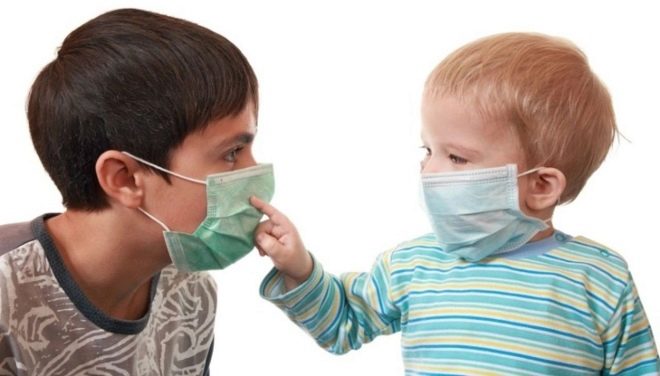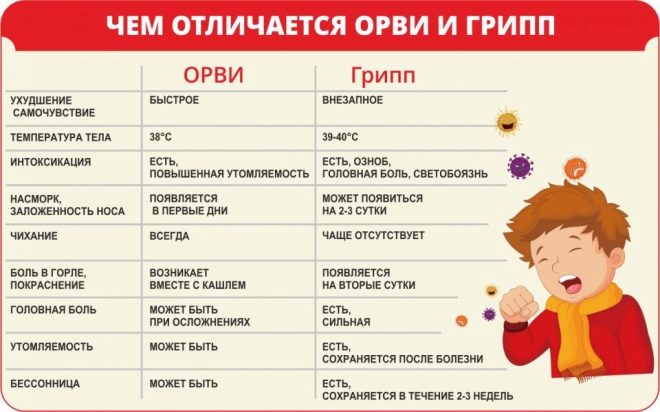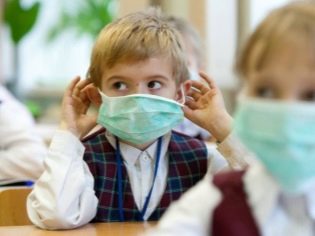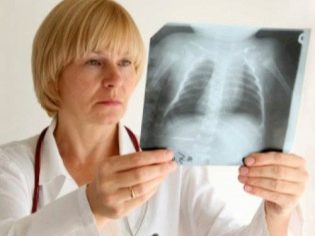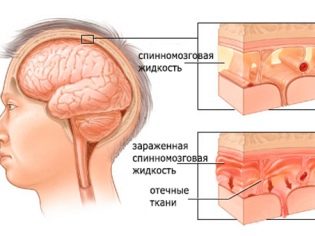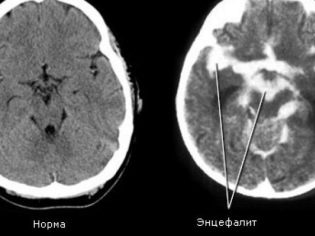Signs of flu in children and unlike ARVI
Everyone knows about the danger of flu for children. But not everyone is able to distinguish the flu virus from other viruses that can attack a baby. Therefore, it is worth examining in detail which signs may indicate the presence of the flu and whether it is possible to distinguish this acute illness from ARVI.
The main differences
There is a direct similarity between the flu and ARVI - these both illnesses are caused by viruses. In this case, the first one is in itself included in the ARVI group - acute respiratory viral infections. However, influenza and ARVI are different viruses - the causative agents of the disease. Adenoviruses, rhinoviruses, respiratory syncytial viruses and other numerous representatives of the virus world can cause SARS in a child. Influenza is always caused only by the influenza virus - representatives of its various strains.
Influenza often becomes the cause of epidemics and pandemics, whereas not all viral infections are capable of "working" on such a scale, when entire cities, countries and continents are affected. Influenza pathogens are always transmitted exclusively by airborne droplets, with particles of saliva, with exhaled air. Some viral infections, such as rotavirus, are transmitted through household contact and fecal-oral.
Another significant difference between influenza and other viral respiratory diseases is instability of the strains. The causative agent of influenza mutates annually, while most other infections caused by viruses are relatively stable.
Is it possible to distinguish?
Almost all acute respiratory viral ailments are considered to be flu-like. According to the clinical picture, they really resemble the flu, but in their essence they are not. To distinguish the flu from ORVI "by eye" is almost impossible. Even experienced doctors do not undertake this, because the only way to find out exactly what a child is sick with is laboratory diagnostics. A child takes blood from a vein, smears from the throat, nose. Research in the laboratory allows you to determine the presence of a specific virus of a particular strain (H1N1, H5N1 or another strain), and anti-influenza antibodies are detected in the blood. Only if the flu is confirmed in the laboratory, can the child be diagnosed appropriately.
External signs cannot be considered reliable, since the flu does not have a specific clinical picture, its symptoms may resemble many ARVIand therein lies the main diagnostic difficulty. However, some differences still exist. For example, the body temperature of a child who has the flu is always much higher than the temperature of the child with another acute respiratory viral infection, strong muscular "aches" and headaches are more characteristic of the flu than other viral infections.
However, in the symptoms of these diseases, everything is quite individual. And sometimes even doctors do not bother to clarify the diagnosis. If the child is sick, the doctor called will most likely make a general diagnosis of ARVI. It is possible to count on the fact that the child will be made all the necessary for the specification of the virus pathogen only in cases when the patient falls into the hospital.
If the child’s state of health is severe, and the blurred diagnosis of “ARVI” does not inspire confidence in parents, no need to be silent.
Mom and dad have the right to demand from a medical worker who arrived at the call, hospitalization with further laboratory diagnostics. Sometimes it saves children’s lives, because the flu virus, namely its complications, is very dangerous.
Often parents call the flu a common cold. This is a mistake because A cold is the result of exposure to a children's organism of low temperatures, during which immunity decreases, a runny nose or cough begins. For viruses, this disease has nothing to do. Accordingly, the common cold has no dangerous complications associated with the flu, and the treatment of the common cold requires something completely different.
To distinguish a cold from the flu is quite simple. With a cold, there is no such high temperature as with the flu, there is no muscular and joint pain, intoxication. The common cold can manifest itself only by respiratory symptoms, for example, a runny nose, and often it proceeds without fever. Flu also differs from the ARI (acute respiratory disease) agent. ARD can be caused by optional viruses, sometimes allergens are runny in the head cold, while Flu is always an extremely acute viral disease.
Symptoms
Influenza is rarely single, individual registered cases of diseases rather quickly darken the epidemiological picture. The virus is extremely contagious, it can affect people of any age. Those who have been vaccinated are also susceptible to it, but their disease is easier and usually goes without serious and dangerous complications. The most dangerous flu is for pensioners and children, because their immunity for age-related physiological reasons is significantly weaker and more vulnerable than the immunity of an adult.
It is possible to get infected only from a person who has the flu or is a hidden carrier if the disease proceeds in erased form. In the first few hours after infection, a person who has not yet realized that he is infected is a source of infection for others.
The first signs make themselves felt after the incubation period, which can be several hours, and can last several days. The disease lasts about a week.
Infections in the spring cause less concern among specialists than the incidence in autumn and winter. The drier the air, the lower the humidity, the faster the flu virus spreads and the more severe the disease causes. The most "favorite" virus of the flu is the temperature of the air at which it shows the most activity - from -5 to +5 degrees Celsius.
Infection occurs respiratory, the nasal passages for the influenza virus are the “entrance gate”, and very rarely - the mucous membrane of the eyes. The virus is primarily introduced into the cells of the ciliated epithelium, in which it begins its replication. Cells begin to die, the process very quickly spreads to the epithelial cells of the bronchi, trachea. When the ciliated epithelium detaches due to the death of a large number of its cells, the virus enters the bloodstream.
The spread of the virus throughout the body begins; in a child, this stage is manifested by severe intoxication, headache and muscle pain, aching joints, a feeling of unbearable pressure on the eyeballs. At the same time, the virus acted on the child’s immunity, causing its suppression. In children with weak immunity, this process proceeds faster, increases the likelihood of attaching a secondary bacterial infection, the development of severe complications.
The older the child, the lower the probability of complications and the longer the incubation period. It is clear that a child at 2 years old will be sick more seriously than a child at 4 years old, and a child at 5 years old will find it harder to endure the flu than a teenager.
The first signs of flu are dry nose at high temperatures.
If a child’s disease begins with a cold, then most likely it is a question of any other viral disease.The early stage of the flu is characterized by the absence of nasal mucus flow. On the contrary, the disease is manifested by a sensation of heat and dryness in the mouth and nose. A dry, frequent cough may also occur at an early stage.
As the disease develops, pain appears behind the sternum when coughing, nasal bleeding may appear, pain in the whole body - in the legs, back, arms, hemorrhagic point rash. With mild flu, the symptoms last for about 4 days, then they subside, the state of health improves somewhat, but weakness persists for several more days. We can speak about the development of complications when, after a little relief, the condition worsens again.
What can be complications of influenza is definitely quite difficult to say, as in general talking about the likelihood of complications. They do not develop as often as it seems. Only severe, toxic and moderately severe cases of influenza can lead to complications. Death from the complications of the flu is possible at any age, but most often tragedies occur with children under 2 years of age.
Complications most often affect the respiratory and cardiovascular systems. These include severe pneumonia with a bacterial origin, hemorrhagic pneumonia, lung abscess, distress syndrome, sinusitis, sinusitis, encephalitis, meningitis, myocarditis, various neuritis.
The temperature of the flu has its own distinctive features. It is high almost immediately, after the first signs of indisposition, the temperature rises to 38.0–40.0 degrees. It lasts 3-4 days. With all forms of flu, whether swine flu or Hong Kong, the fever does not increase gradually, the temperature appears sharply, sharply and immediately has high values.
Intoxication does not begin immediately. Unlike some acute respiratory viral infections, nausea and diarrhea, severe headache can occur in the second stage of the disease approximately several hours after the onset of high fever. The stomach rarely hurts when you have the flu infection, but this is possible, especially if the child is small. Sore throat appears most often along with signs of intoxication.
Treatment of the disease is effective only when the child begins to heal in the very early stages.
Within a few hours after the onset of the illness, treatment with antiviral drugs is practically ineffective and only symptomatic treatment is possible - reducing the fever with antipyretic drugs, instillation of vasoconstrictor drops in case of severe rhinitis. Intoxication compensates for the loss of water and salts, giving the child oral rehydration preparations, providing abundant drinking regime.
To better understand how the flu is different from other diseases, the following table will help:
Comparative table of symptoms of viral infections
Symptom | Rhinovirus infection | Flu | Parainfluenza | Respiratory syncytial virus | |
Start of the disease | Spicy | Spicy | Moderately | Moderately | Moderately |
Temperature | 37.0-37.8 or absent | 38,0-40,0 | 37,0-37,8 | 38.0-39.0, keeps for a long time | 37.5-38.0 with a gradual increase |
Respiratory symptoms | Runny nose, sneezing, liquid snot | Dry nose, sore throat, frequent dry cough | Dry cough, hoarseness | Runny nose, swelling of tonsils | Dry cough, often with obstruction. |
Intoxication | Not | Strong with muscle pain, nausea. | Mild headache | None or mild | Moderate intoxication |
Lymphadenitis | Not | Sometimes | Not | Often pronounced | Sometimes |
About the difference between acute respiratory viral infections and colds and acute respiratory infections, will tell Dr. Komarovsky in the next video.


